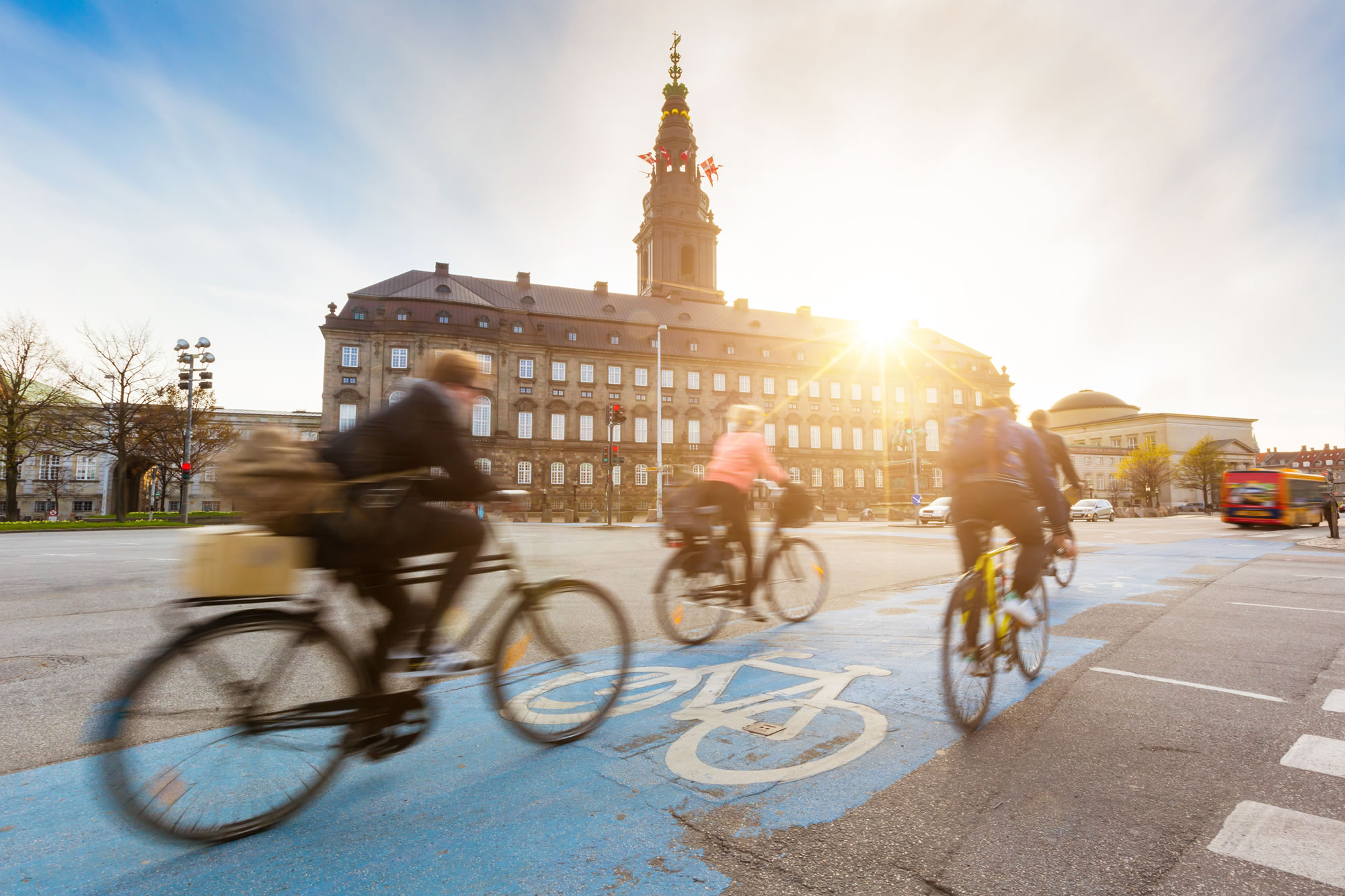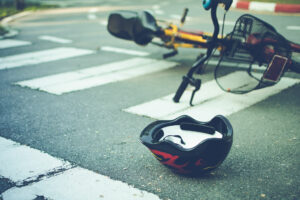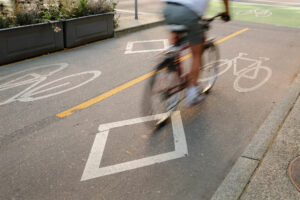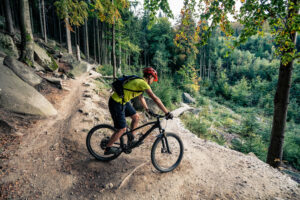Denmark is known for its progressive urban planning, architecture and design. In the capital city of Copenhagen, the cycling culture is everywhere. The city has over 390 km of designated bike lanes and 41% of its population identifies cycling as their primary mode of transportation.
Mikael Colville-Anderson, a Danish-Canadian urban designer and urban mobility expert, wrote in The Guardian why he believes other cities should follow in the footsteps (or bike paths) of Copenhagen.
Colville-Anderson discusses several ways Copenhagen became a standout cycling city:
“The Great Green Wave”
The “green wave” is a separate bike path on major streets controlled by traffic lights that allow cyclists to flow into the city during rush hours without having to put a foot down. Cyclists must travel at a safe and steady speed to catch this wave.
“The details count too”
The city has installed simple infrastructure that creates ease for cyclists while they are on route. Footrests, railings and waste bins facing bike paths are just a few examples.
“Efficient cycle infrastructure makes financial sense”
The cost to build 1km of a bike path is paid off by the healthy users who also contribute €235 million ($336 million Canadian) in taxes.
“Good design improves the behaviour of cyclists”
By providing best-practice infrastructure and giving cyclists their own space in an urban landscape, Copenhagen has conditioned cyclists to follow the road rules. 7% break traffic laws and only 1% run red lights or ride on the sidewalk. Because of safe infrastructure, cyclists do not need to feel aggressive, hostile or threatened.
“The perception of safety is crucial”
The city equally concentrates its efforts on providing safe cycling infrastructure and promoting cycling as a safe form of transportation.
“It’s not about the lycra – it’s about all ages and wages”
Copenhagen’s plans focus on the concept of “citizen cyclists”; making safe cycling accessible for everyone.
“Don’t be afraid to experiment”
New ideas are well-thought-out; the city even enlists skeptics as test participants. If an idea fails, extensive data is collected for future projects.
“Don’t block desire lines – use them”
As Colville-Anderson put it, “The city realized that you can’t tell people where to go. Rather, they will show you where they want to go and you should listen to them and plan accordingly.”
“Put your money where your mouth is”
Copenhagen understands the importance of iconic and functional structures. The city was able to add $5 million to its original $1 million budget to build the Cykelslangen, an elevated two-way orange bike lane connecting the highway and harbour bridge.
“Don’t waste time on ridiculous, headline-grabbing schemes”
“Simple, efficient, intuitive” ideas are all cyclists want.
For more information:
- Innovation in, lycra out: what Copenhagen can teach us about cycling, The Guardian
- Why can’t all cities have bike bridges like Copenhagen’s new Cycle Snake? The Guardian







